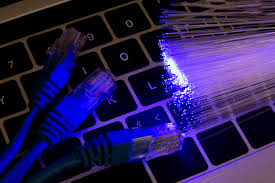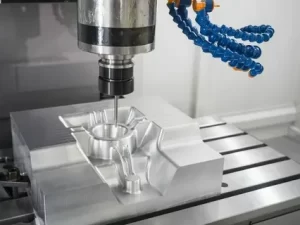As digital infrastructure becomes increasingly important, the type of cabling used in a network plays a central role in overall performance. When building or upgrading a communication system, one of the most critical decisions involves selecting the right fiber cable. The proper cable ensures high-speed data transfer, minimal signal loss, and durability over time.
Fiber optics has transformed how data is transmitted, offering speed and reliability unmatched by traditional copper cables. However, with a variety of fiber cable types available, understanding their differences is necessary for making an informed decision. This blog outlines the essential factors to consider when choosing a fiber cable, covering its types, structure, use cases, and role in modern networking environments.
Types of Fiber Cable: Single-Mode vs. Multimode
The first distinction to understand is the difference between single-mode and multimode fiber. These categories refer to how light travels through the core of the fiber.
Single-Mode Fiber
Single-mode fiber cables have a small core diameter, typically around 8 to 10 microns. They transmit infrared laser light (wavelengths of 1310 or 1550 nanometers). Because the core is so narrow, light travels in a straight path, reducing modal dispersion and allowing data to travel over longer distances.
Multimode Fiber
Multimode fiber cables have a larger core diameter, usually 50 or 62.5 microns. They carry multiple light modes, which can lead to modal dispersion—light signals arriving at different times. This limits the range to shorter distances, typically under 2 kilometers.
Multimode cables are easier to work with and more cost-effective for shorter links, making them ideal for local area networks (LANs), data centers, and office networks where the required range is limited.
Key Considerations When Selecting Fiber Cable
Choosing the correct fiber optic cable involves evaluating several technical and environmental factors. Making the right choice can ensure efficient performance and avoid costly rework or upgrades later.
- Distance and Bandwidth Needs
As mentioned earlier, single-mode is best for long-distance transmission with high bandwidth, while multimode suits shorter ranges. Clearly defining the distance between connection points helps narrow down the cable type needed.
- Network Environment
Cables used indoors may differ significantly from those used outdoors. Indoor fiber cables are often easier to handle and less robust because they are installed in protected environments. Outdoor fiber cables are built with additional layers of protection against moisture, temperature changes, and mechanical stress.
- Connector Type Compatibility
Connectors such as LC, SC, and ST must match the hardware being used. It’s essential to ensure compatibility between the fiber cable and the connectors at both ends. Mismatched components can lead to performance issues or complete failure in signal transmission.
- Mode Conditioning and Color Coding
Color-coded jackets help identify cable types quickly. For example, yellow typically indicates single-mode, and orange or aqua is used for multimode. Mode conditioning may also be necessary when mixing old and new technologies, such as connecting gigabit Ethernet over multimode fiber.
Common Use Cases for Fiber Cables
Fiber cables are used across a wide range of applications. Their ability to transmit data at high speeds and across long distances makes them ideal for many modern networking needs.
- Data Centers
High-density environments require reliable and compact cabling solutions. Fiber cables support high-speed data transfer and minimize interference, which is critical in a data center environment with large volumes of network traffic.
- Campus Networks
In multi-building settings such as business parks, hospitals, or universities, single-mode fiber cables are often used to connect various locations over longer distances without loss of signal quality.
- Industrial Networks
Fiber cables are immune to electromagnetic interference (EMI), making them perfect for use in industrial environments with high electrical noise. They maintain signal integrity even in harsh conditions.
- Security and Surveillance Systems
High-resolution cameras generate a large amount of data that needs to be transmitted quickly and without interruption. Fiber optic cables provide the speed and reliability required for these systems to function effectively.
Conclusion
Selecting the right fiber cable is not just about matching technical specifications—it’s about understanding the operational environment, future scalability, and long-term reliability. Whether for long-range data transmission in campus networks or short-range connections within data centers, fiber optic cables provide a stable and efficient solution when chosen correctly.
With ongoing developments in network speed and capacity, fiber optics continues to be a critical infrastructure component. Taking the time to evaluate the right fiber cable for your needs can lead to better performance, reduced maintenance, and greater overall satisfaction with your communication systems.






